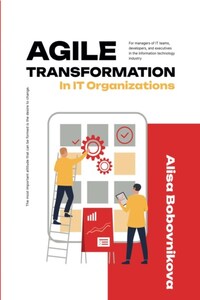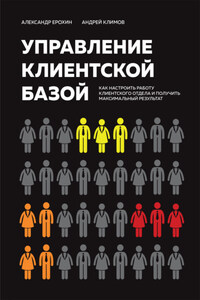Current market conditions stimulate organizations to introduce innovative product improvement solutions. Environment changes responsiveness became an important factor in market competition. This trend is especially typical for the IT industry as this field is characterized by a lot of innovation. Transforming companies find it difficult to adapt to continuous change. This is often caused by lack of organizational flexibility and changes responsiveness practice. In order to address this issue, companies need to continuously search, evaluate, analyze and develop new tools for organizational culture.
This narrative is for those who have chosen the path of transformation to gain speed, flexibility and effectiveness. We will talk about how to improve the team’s effectiveness with agile techniques and also give you an idea how to start changes and how to measure them.
Chapter 1 discusses the approach to understanding agile methodology and its main provisions. Special attention is paid to the relationship between the type of thinking and the team effectiveness. Continuous customer focus and the need for regular teams’ interaction is revealed from practical examples.
Chapter 2 reflects agile management features and waterfall approach, which is also considered classic. This chapter provides these methodologies comparative analysis, highlighting distinctive features and opportunities for their use.
Chapter 3 describes agile transformation stages, most common agile frameworks, their distinctive features as well as their pros & cons.
Chapter 4 provides an overview of the main existing agile methodologies with implementation examples, as well as a step-by-step agile implementing roadmap also considering agile driven project documentation required.
Chapter 5 and Chapter 6 describes agile implementation effectiveness assessment methods, analyzes direct and indirect implementation process metrics as well as the technique implementation success criteria in different companies’ practice, and provides key agile project’s KPIs.
Chapter 7 is dedicated to the agile transformation challenges and explanation what agile coaching is, describing Agile coaching levels and tools as well as how coaching can help you with transformation.
The narrative is filled with living examples of companies implementing transformation in the IT sphere. Thanks to organizations’ practice, we deliver experience that can be useful for you along this difficult path. New management practices introduction in an organization is a way that requires changes not only in actions but also in attitude. We hope you will follow this path with us.
CHAPTER 1. WHAT IS THE AGILE METHODOLOGY?
In 2021, the Agile Manifesto celebrated its 20th anniversary. The approach originated as a revolt of developers against clumsy IT corporations.
Let's figure out what Agile is, learn something from its history, and what is its difference from other software development approaches. We will also dive into some of the Agile frameworks, find out which option is most suitable for you, and what Agile coaching is, so this knowledge will allow you to apply it in your team or company.
The material may be useful and informative for wide range of specialists dealing with software development: front-end and back-end developers, DevOps specialists and software architects as well as for team leaders, project managers, product owners, CTO’s, CPO’s etc.
To begin with, let’s recall some facts. In 1970, Dr. Winston Royce issued the document that defined Waterfall1. Probably it was already being done by others at that time, but it is considered now to be definitive. He marked












